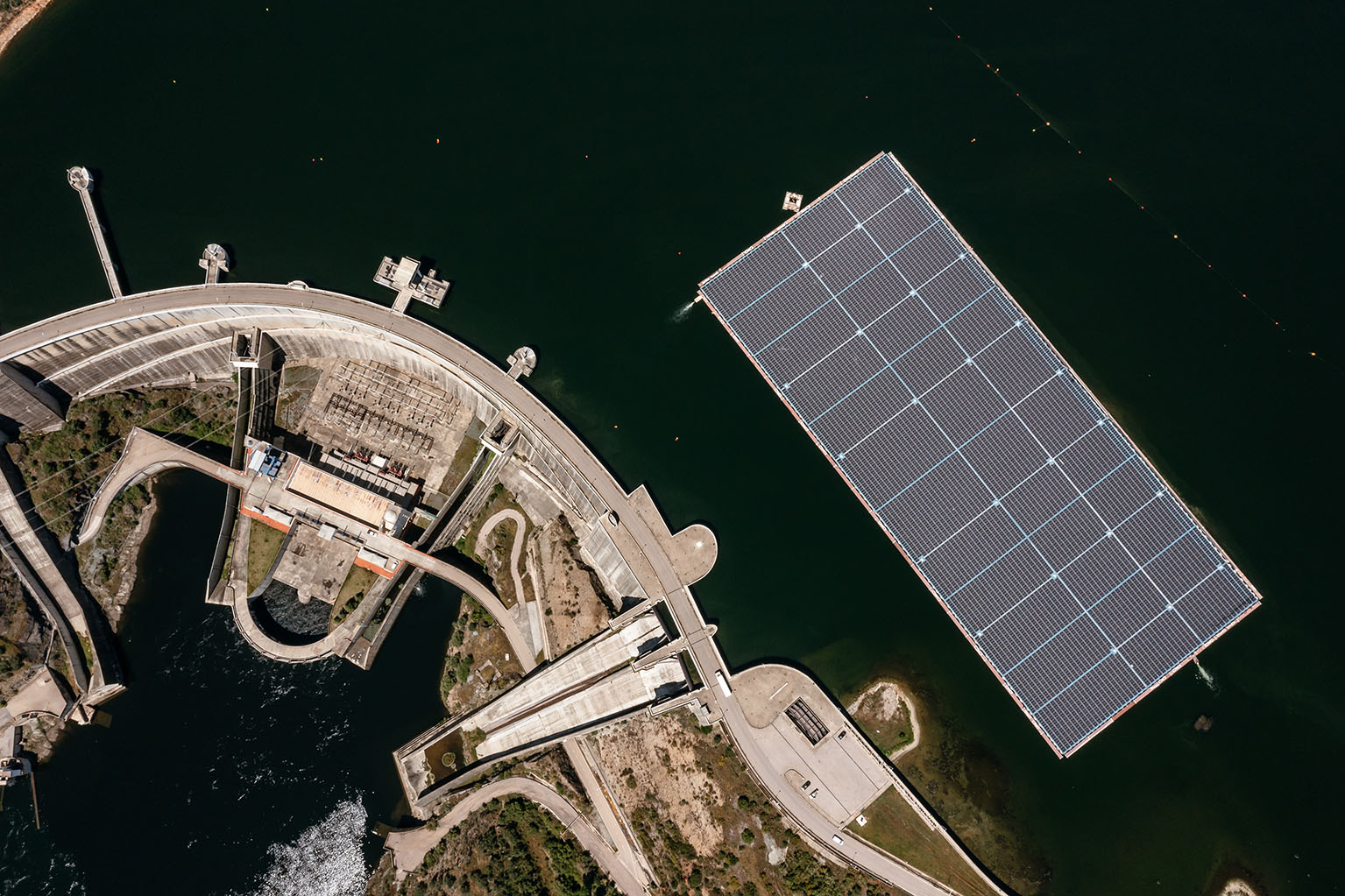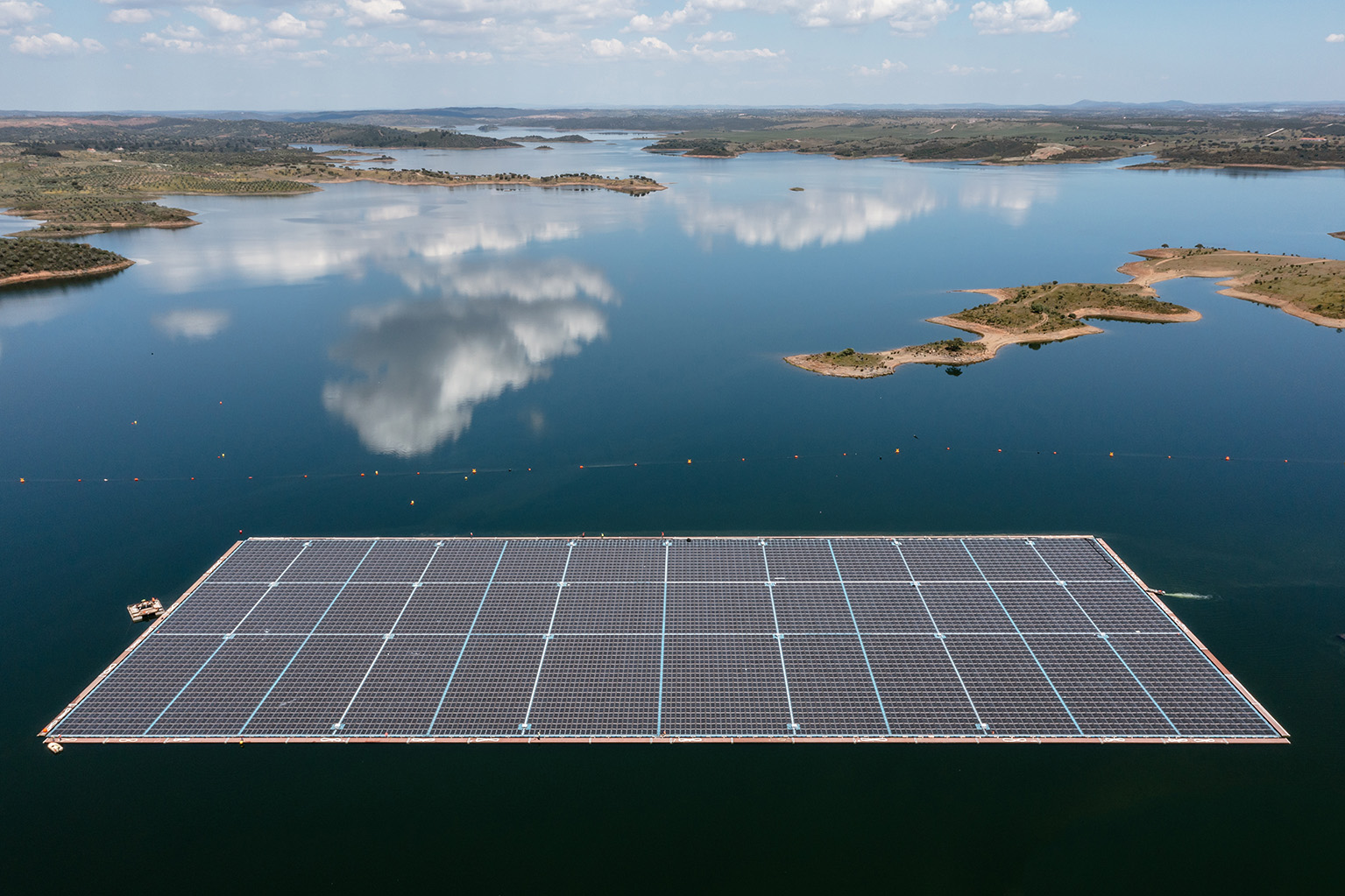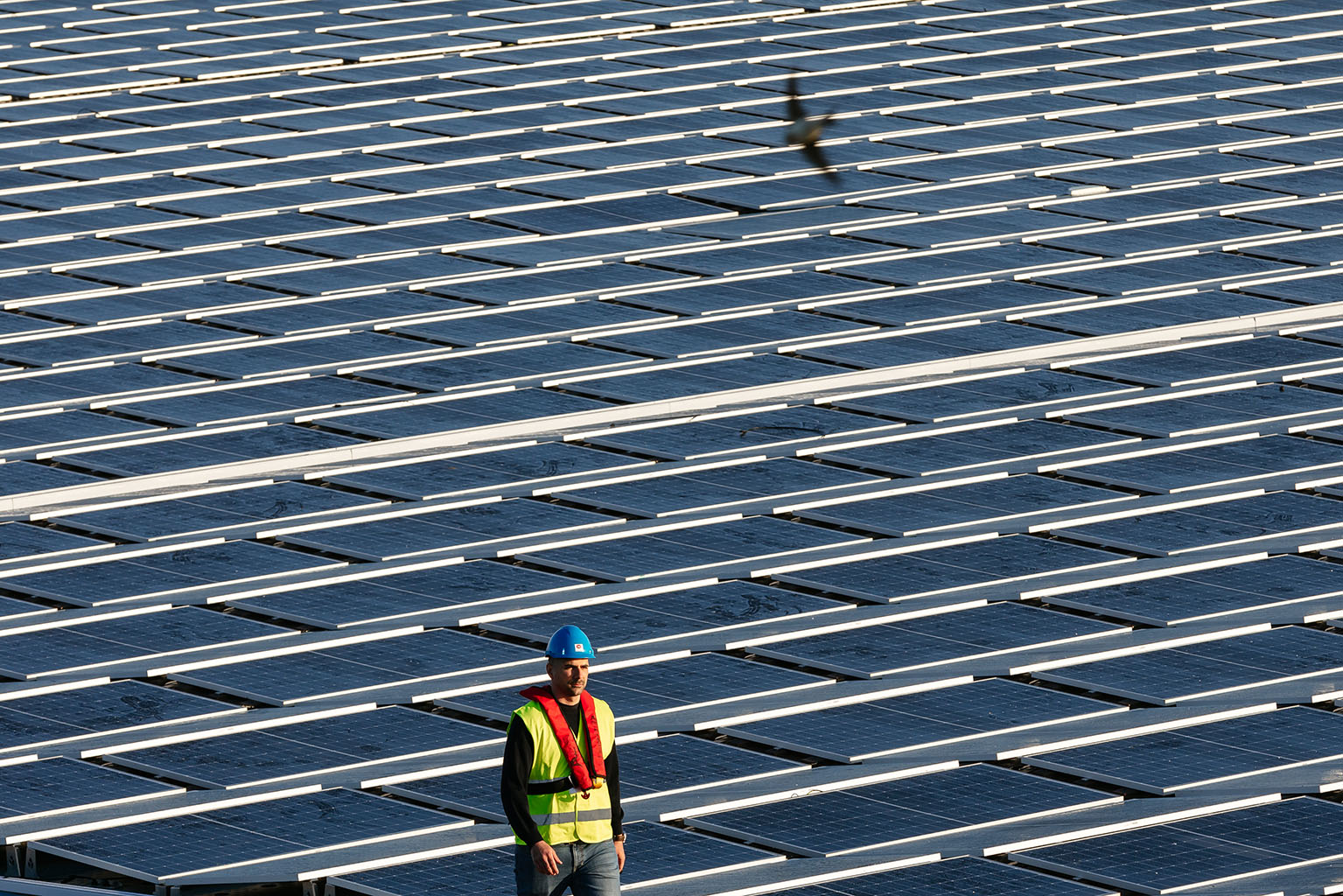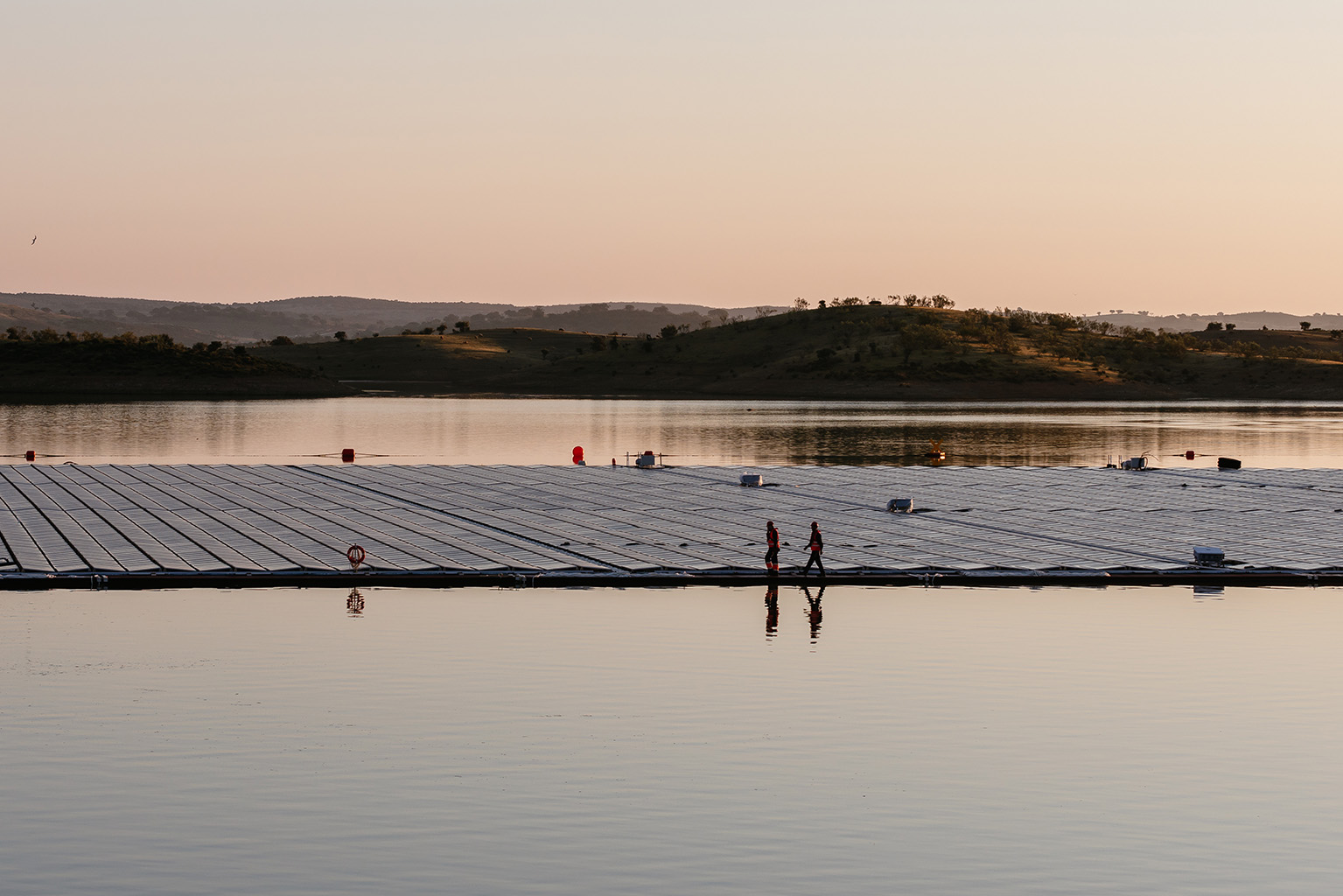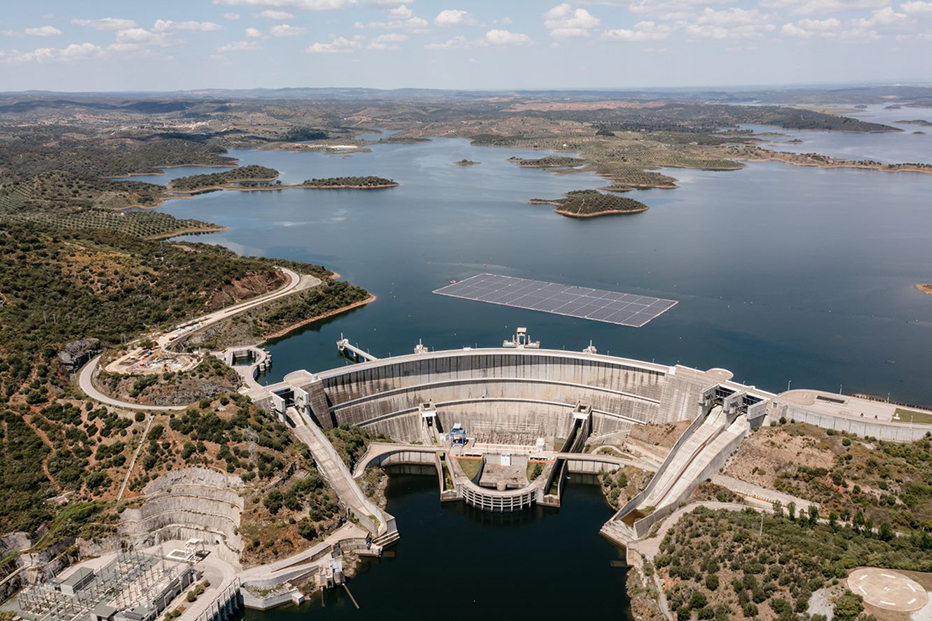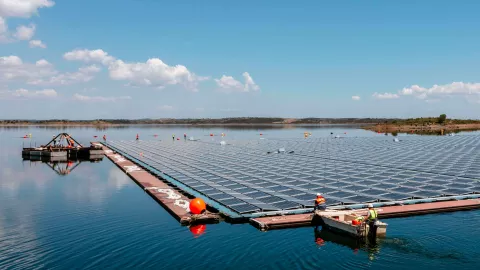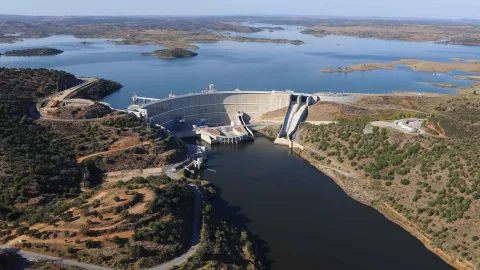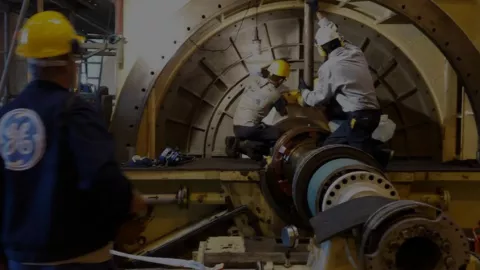Inauguration of the Floating Solar Power Plant in Alqueva
In July 2022 EDP inaugurated the new floating solar photovoltaic power plant in Alqueva. Innovation is at the heart of our strategy and the development of floating solar technology marked a turning point in the national energy panorama.
The Alqueva floating solar photovoltaic plant is today the largest floating solar plant in Europe on a reservoir: with around 12 thousand photovoltaic panels and an annual production capacity of 7.5 GWh, it supplies approximately 1500 families in the Portel and Moura region.
Increase the flexibility of hydroelectric power
Converting solar energy into electricity through photovoltaic technology is an increasingly cheaper and more efficient process. Portugal has one of the highest levels of solar resource in European countries, but using it presupposes occupying very significant geographic areas.
Using the reservoir of hydroelectric power plants is an opportunity: it avoids the occupation of other areas on land, useful for other activities, such as agriculture or pastoralism, and one can take advantage of the connection to the already installed electricity grid that hydroelectric plants do not steadily use. Because there is more sun when there is less rain and vice versa.
Portugal becomes a world reference in energy transition, contributing to a favourable context for investment in renewables, essential for fighting climate change, but also for ensuring price stability and energy independence.
At EDP, we are pioneers in the development of floating solar technology, an experience that began five years ago with the floating solar photovoltaic plant in Alto Rabagão and whose success now allows us to leverage other projects in new geographies.
Alqueva: lower impact, higher efficiency
The Alqueva Floating Photovoltaic project is one of EDP's most innovative solar energy projects: a floating power plant with around 12,000 photovoltaic panels in the Alqueva dam reservoir. The platform was placed in its definitive location in May 2022 and, in June, the project completed new stages such as energisation. With an annual production capacity of 7.5 GWh, it is supplying the equivalent of 25% of the consumers in the region (Portel and Moura).
Alqueva has thus become a kind of living laboratory, by allowing the complementarity between dispatchable (hydroelectric) and non-dispatchable (photovoltaic) renewable energy production technologies to be tested, as well as long-term energy storage technologies (pumping) and short-lived (battery). With the power of 1MW and storage capacity of around 2MWh, the battery uses lithium-ion technology, which is already widely used in the electrical sector globally. The pumping system allows to use wind and solar energies, in periods of lower consumption, to pump water from the reservoir and, in this way, reuse it to produce new hydroelectric energy.
Focus on Sustainability
When building this floating solar power plant, one of the concerns was to create a more sustainable floater for the 12 thousand panels and 25 thousand floaters that make up the structure of the future floating solar power plant in the Alqueva reservoir.
After intensive work in collaboration with Corticeira Amorim and the Spanish manufacturer Isigenere, it was possible to develop an innovative material, based on a new cork composite, which it is tested for the first time in a renewable energy production project. It was a development done in record time, which allows a 30% reduction in the CO2 footprint of these floats - to be CO2 negative in the future, is the ambition.
EDP's new floating solar project is in line with regulatory changes ongoing in Portugal, that open the door to the existence of photovoltaic solar auctions and hybridisation, the combination of several sources (renewable or fossil) at a single connection point to the electricity grid.
In the Alqueva solution, a second platform was added, containing a 20-foot container (approximately 12 meters) that has a transformer and medium voltage cells, in order to reduce losses. The technology used is Seaflex, and there were several innovation projects in the implementation phase, such as Fresher and XFLEXHydro.
Alqueva floating solar power plant in numbers
- Number of panels: around 12,000
- Platform dimensions: 4 ha
- Installed Power: 4 MW
- Annual energy production: 7.5 GWh (1,500 of families in the region)
- Reservoir depth: 70 m
- Water plane oscillation: 23 m
Alto Rabagão
A pioneering project at an European level, a floating photovoltaic solar power plant, on the Rabagão river reservoir, in Montalegre, tests the complementarity between solar energy and hydropower, as well as the environmental and economic advantages of this new technology.
With 840 solar panels occupying an area of 2500 m2, the platform, which results from a partnership between EDP Produção, EDP Renováveis and EDP Comercial, has an installed capacity of approximately 220 kWp and an estimated annual production of around 300 MWh.
Studies to move forward with this plant began in 2015 and the construction, which involved 13 suppliers (mostly Portuguese) and which, at the peak of the work, had 25 workers, began in June 2016.
EDP invested 450,000 euros to proceed with the installation of this pilot unit, which allowed us to know the implications, advantages and disadvantages of installing photovoltaic conversion panels on floating platforms and operating them in conjunction with hydroelectric generation. It was also intended to prove that this solution has clear environmental benefits in the water body because it reuses existing facilities, avoiding the construction of new transport lines.
The Alto Rabagão reservoir was chosen because of its space and adverse weather conditions that allow it to test the technology in extreme conditions. It also has a deep valley with rocky soil and significant elevation variations, which allowed testing the mooring solutions.
